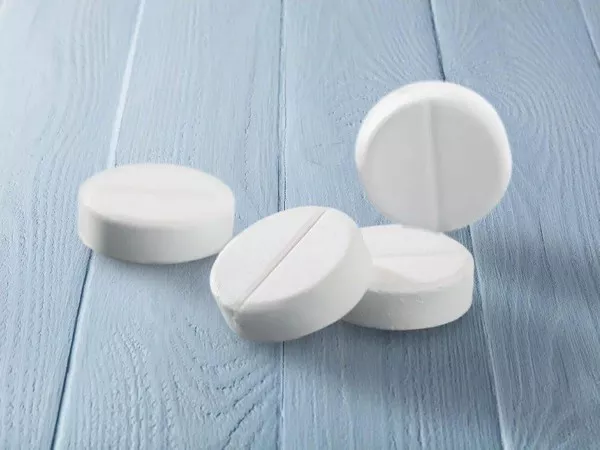What is a Low – Intensity Workout?
A low – intensity workout is an exercise routine that is performed at a relatively slow pace and with a lower level of exertion compared to high – intensity workouts. It typically keeps your heart rate at a moderate level, usually around 40 – 60% of your maximum heart rate. To calculate your maximum heart rate, you can use the formula 220 – your age. For example, if you are 30 years old, your maximum heart rate is 220 – 30 = 190 beats per minute. A low – intensity workout would then keep your heart rate between 76 (40% of 190) and 114 (60% of 190) beats per minute.
During a low – intensity workout, you should be able to carry on a conversation comfortably without getting overly out of breath. The movements are often smooth, controlled, and sustained over a longer period of time. This type of exercise focuses on endurance, flexibility, and building a solid foundation of strength rather than pushing your body to its limits in a short amount of time.
Benefits of Low – Intensity Workouts
Heart Health
Contrary to the belief that only high – intensity exercise is good for the heart, low – intensity workouts can have a profound positive impact on cardiovascular health. Regular low – intensity exercise, such as walking, cycling, or swimming at a leisurely pace, helps to strengthen the heart muscle. It increases the heart’s ability to pump blood efficiently, lowers blood pressure, and reduces the risk of heart disease. By keeping the heart rate elevated at a moderate level for an extended period, low – intensity workouts improve blood circulation throughout the body, delivering oxygen and nutrients to the tissues and organs more effectively.
Weight Management
While high – intensity workouts may burn more calories in a shorter time, low – intensity workouts can also contribute significantly to weight management. They increase the body’s metabolism over time, helping the body to burn calories even at rest. Additionally, low – intensity workouts are often more sustainable in the long term. People are more likely to stick with a low – intensity exercise routine, which means consistent calorie burn and gradual weight loss or maintenance. Moreover, low – intensity workouts can help to reduce stress, which is often associated with overeating and weight gain.
Joint Health
One of the major advantages of low – intensity workouts is their gentle impact on the joints. High – intensity exercises, especially those involving jumping, running, or quick movements, can put a lot of stress on the joints, increasing the risk of injury. Low – intensity workouts, on the other hand, are much easier on the joints. Activities like yoga, tai chi, and gentle stretching can improve joint flexibility, mobility, and strength without causing excessive wear and tear. This makes them an excellent choice for people with joint problems, such as arthritis, or those who are recovering from joint injuries.
Stress Reduction
In today’s fast – paced world, stress is a common problem that can take a toll on both physical and mental health. Low – intensity workouts are a great way to reduce stress and improve mental well – being. Exercises like meditation, slow – paced yoga, and gentle walking in nature can help to calm the mind, reduce anxiety, and improve sleep quality. When you engage in a low – intensity workout, your body releases endorphins, which are natural mood boosters. These endorphins can help to reduce feelings of stress and improve your overall sense of happiness and well – being.
Injury Prevention and Rehabilitation
Low – intensity workouts are an essential part of injury prevention and rehabilitation. For athletes or individuals who engage in high – intensity sports, incorporating low – intensity exercises into their training routine can help to prevent injuries by improving flexibility, balance, and muscle strength. In the case of injuries, low – intensity workouts can be used as a gentle way to start the rehabilitation process. They allow the body to recover while still maintaining some level of physical activity, which can speed up the healing process.
Suitable for All Ages and Fitness Levels
Another great benefit of low – intensity workouts is that they are suitable for people of all ages and fitness levels. Whether you are a beginner who is just starting to exercise, an elderly person looking to stay active, or someone with a chronic health condition, there is a low – intensity workout that can meet your needs. These workouts can be easily modified to suit individual abilities, making them accessible to everyone.
Types of Low – Intensity Workouts
Walking
Walking is one of the simplest and most accessible low – intensity workouts. It can be done anywhere, at any time, and requires no special equipment. A brisk walk can keep your heart rate elevated at a moderate level, improve cardiovascular health, and burn calories. You can walk on a treadmill, in a park, or around your neighborhood. To make your walking workout more challenging, you can add intervals of faster walking or walk uphill.
Cycling
Cycling is another great low – intensity workout that is easy on the joints. You can cycle outdoors on a bike or indoors on a stationary bike. Cycling at a moderate pace can improve leg strength, cardiovascular health, and endurance. It is also a fun way to explore new places and enjoy the outdoors. If you are new to cycling, start with short rides and gradually increase the distance and intensity as your fitness level improves.
Swimming
Swimming is a full – body low – intensity workout that is excellent for people of all ages and fitness levels. It is a low – impact exercise that puts very little stress on the joints, making it a great choice for people with joint problems or injuries. Swimming works all the major muscle groups in the body, improves cardiovascular health, and increases flexibility and endurance. You can swim laps at a local pool or take part in a water aerobics class.
Yoga
Yoga is a mind – body practice that combines physical postures, breathing techniques, and meditation. It offers a wide range of benefits, including improved flexibility, strength, balance, and stress reduction. There are many different types of yoga, from gentle restorative yoga to more dynamic vinyasa yoga. Beginners can start with gentle yoga classes that focus on basic postures and breathing techniques. As you become more comfortable with yoga, you can gradually increase the intensity and complexity of your practice.
Tai Chi
Tai chi is an ancient Chinese martial art that is practiced as a low – intensity exercise for health and well – being. It involves slow, flowing movements that are designed to improve balance, flexibility, and strength. Tai chi is often referred to as “meditation in motion” because it combines physical movement with mental focus and relaxation. It is a great exercise for people of all ages, especially for those who are looking for a gentle way to stay active and reduce stress.
Pilates
Pilates is a low – intensity workout that focuses on core strength, flexibility, and body alignment. It uses a series of controlled movements and exercises that target the abdominal, back, and pelvic muscles. Pilates can be done on a mat or using specialized equipment. It is a great exercise for improving posture, reducing back pain, and enhancing overall body strength and flexibility.
Meditation
Although meditation is not a traditional physical exercise, it is an important part of a low – intensity workout routine. Meditation involves focusing your mind and clearing your thoughts, which can help to reduce stress, improve mental clarity, and enhance overall well – being. There are many different types of meditation, including mindfulness meditation, transcendental meditation, and loving – kindness meditation. You can start with a few minutes of meditation each day and gradually increase the duration as you become more comfortable with the practice.
Designing a Low – Intensity Workout Routine
Set Your Goals
Before you start designing your low – intensity workout routine, it is important to set your goals. Are you looking to improve your cardiovascular health, lose weight, increase flexibility, or reduce stress? Your goals will determine the type of exercises you choose and the intensity and duration of your workouts.
Choose the Right Exercises
Based on your goals, choose the low – intensity exercises that are most suitable for you. If you are looking to improve cardiovascular health, you might choose walking, cycling, or swimming. If you want to increase flexibility and strength, yoga, tai chi, or Pilates might be a good choice. You can also combine different types of exercises to create a well – rounded workout routine.
Determine the Intensity and Duration
The intensity and duration of your low – intensity workouts will depend on your fitness level and goals. As a general rule, start with a low intensity and gradually increase the intensity and duration as your fitness level improves. Aim to exercise for at least 30 minutes per day, most days of the week. You can break your workout into shorter sessions if that is more manageable for you.
Warm – up and Cool – down
Warming up before your workout and cooling down afterward are essential for preventing injuries and reducing muscle soreness. A warm – up can include 5 – 10 minutes of light cardio, such as walking or cycling, followed by some gentle stretching. A cool – down can include the same type of light cardio and stretching, but at a slower pace.
Incorporate Rest Days
Rest days are an important part of any workout routine, including low – intensity workouts. Your body needs time to recover and repair after exercise, and rest days can help to prevent overtraining and injuries. Aim to have at least one or two rest days per week.
Listen to Your Body
One of the most important things to remember when designing a low – intensity workout routine is to listen to your body. If you feel pain or discomfort during your workout, stop immediately and consult a healthcare professional or a fitness coach. It is also important to give your body enough time to adjust to the new exercise routine and not push yourself too hard too soon.
Tips for Getting the Most Out of Low – Intensity Workouts
Be Consistent
Consistency is key when it comes to getting the most out of low – intensity workouts. Make exercise a regular part of your daily routine and stick to your workout schedule as much as possible. Even a short, low – intensity workout is better than no workout at all.
Stay Hydrated
Drinking plenty of water is important for overall health and fitness, especially during exercise. Make sure to drink water before, during, and after your low – intensity workout to stay hydrated.
Wear the Right Gear
Wearing the right gear can make your low – intensity workout more comfortable and enjoyable. Invest in a good pair of shoes that provide support and cushioning, especially if you are doing activities like walking or cycling. You may also want to wear comfortable clothing that allows you to move freely.
Find a Workout Buddy
Finding a workout buddy can make your low – intensity workout more fun and motivating. You can encourage each other, share your experiences, and make exercise a social activity.
Make it Fun
Low – intensity workouts don’t have to be boring. Find activities that you enjoy, such as dancing, hiking, or gardening, and incorporate them into your workout routine. When you enjoy what you are doing, you are more likely to stick with it.
Track Your Progress
Tracking your progress can help you stay motivated and see how far you have come. You can use a fitness tracker to monitor your heart rate, steps, distance, and calories burned. You can also keep a workout journal to record your workouts, how you feel, and any improvements you notice over time.
Conclusion
Low – intensity workouts are a gentle yet powerful way to improve your physical and mental health. They offer a wide range of benefits, including improved cardiovascular health, weight management, joint health, stress reduction, injury prevention, and rehabilitation. There are many different types of low – intensity workouts to choose from, and they can be easily modified to suit your individual needs and fitness level. By following the tips and guidelines outlined in this article, you can design a low – intensity workout routine that is safe, effective, and enjoyable. So, don’t be afraid to give low – intensity workouts a try. Your body and mind will thank you for it.
Related topics:
What Makes the Best Fitness Cycle Stand Out?
What Are the Benefits and Techniques of Spinning Bike Workouts?



































